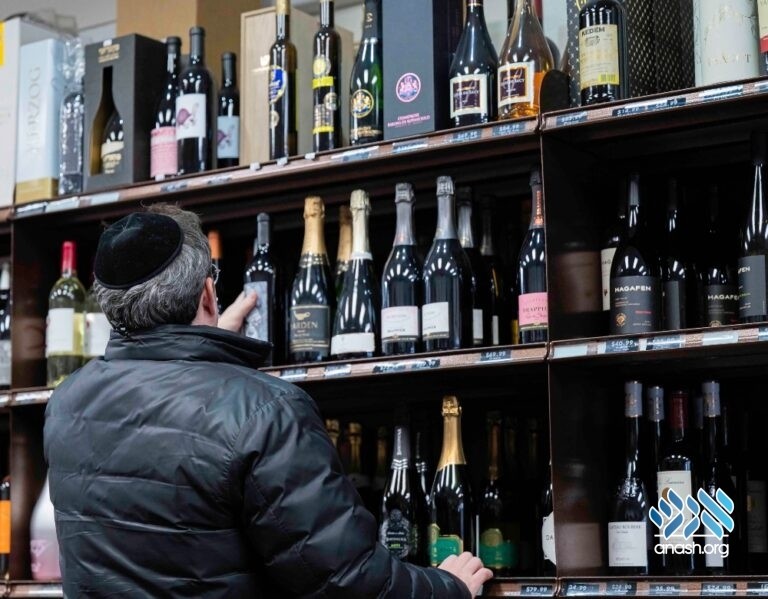“There is no simcha except through drinking wine”: On Yom Tov and Chol Hamoed, there is an obligation to drink wine every day. Here are the top 5 mistakes to avoid when shopping for a bottle to drink and share.
By Levi Spiegel
Mistake Number 1: Label shopping
If not for the risk involved, I would name right here and now several very expensive wine bottles with extremely convincing labels, but in reality, the wine quality is horrific—I mean truly revolting and nasty.
Here’s why: unsuccessful wineries tend to invest a lot in the graphic design as opposed to the wine quality. The winery might be inexperienced and sloppy, but the graphics are catchy and convincing. They can possibly bump up the price for the simple buyer to really be certain that it is a nice bottle. This may not be the winery’s fault; a bad vintage or a rough start is not something they can predict, but we, the buyers, can avoid that.
So if you aren’t sure what will be a good purchase, reach out to a friend you trust or simply ask the wine store owner for help. He will make sure you find the right bottle.
Mistake Number 2: Proper Storage in the Wine Store
A store that does not properly store its wine is not worth visiting.
Even the best of wines can go bad. As a general rule, 52–57°F is the proper temperature for wine. Depending on the delicacy of the grapes, alcohol percentage, and tannin, different factors can slightly change. Wine that overheats causes the molecules to expand inside the bottle, creating enough pressure for the wine’s aroma to escape through the cork.
The worst of all is frequent temperature change. Without a proper cooling system, the store’s temperature can start early in the morning at 40 °F and by midday reach 60–70 °F. In such a case, the wine is likely to go bad after 4–10 weeks in the store. When normally red wine can be stored for years, or possibly decades! Always make sure to purchase your wine from a trustworthy store whose owner cares about his wine and customers.
Always try to fetch the bottle standing furthest back on the shelf; it will be the one that was least exposed to the sun’s rays. If you have a talk with the owner, don’t be afraid to ask him to get you the same bottle from the latest box he received. Preferably from the basement. Better insulation and temperature consistency are maintained underground.
As a rule, the less time the wine has spent in the store, the better. Not to mention, storing the wine properly at home is just as important. If you happen to not have a cool place with consistent temperature (not necessarily a wine fridge), open the bottle (and consume it) within a month of purchasing. The sooner the better.
Mistake Number 3: Returns
One of your purchases happened to be a spoiled bottle? Do not be afraid to return it. The store owner should respect such a request and either fully or partially refund you. In some cases, compensating with a different wine will solve the problem. So don’t be afraid to return your regrets. The owner should be informed of the issue; it might be a problem with the shipment or the specific barrel batch. The owner might deserve compensation from the company. It’s a win-win situation.
Mistake Number 4: Spending Money
A common mistake with spending money is assuming an expensive bottle will be worth its price. Another common mistake is hoping for a good purchase without spending enough money. I know there are reviews out there for the best wines under 15 dollars, but those bottles are great bottles for fifteen bucks, not necessarily great bottles for higher standards. So, do not be misled by expensive tags and fancy labels, and on the other hand, be willing to spend a nice amount of money if you are looking forward to a nice bottle of wine. Obviously, do your research and make sure the bottle actually has a good reputation.
Mistake Number 5: Wrong Expectations
Every vintage is different. Expect nothing from a bottle you enjoyed last year, and it is now on the shelf in front of you. If it’s a different vintage, nothing is the same. A different blend of grapes can be used every year while still maintaining the same price and label. The same applies to a wine with the same label for multiple types of grapes. They are different. They could be better, worse, sweeter, or stronger; there is no reason they should be the same. So if a friend recommends a bottle, for example, 2019 “Isaac’s Ram,” make sure to ask him what If it’s the Cabernet Sauvignon or Cabernet Blanc. And by the way, in my opinion, the Cabernet Sauvignon is better.
Happy wine shopping. L’chaim.

Terrific article, Levi. One of these days you should make some specific recommendations.
Thanks so much levi.
Rules governing nonmevushal wines are very important and must be abided if you want to preserve your gift’s integrity
What is Cabernet Blanc ?